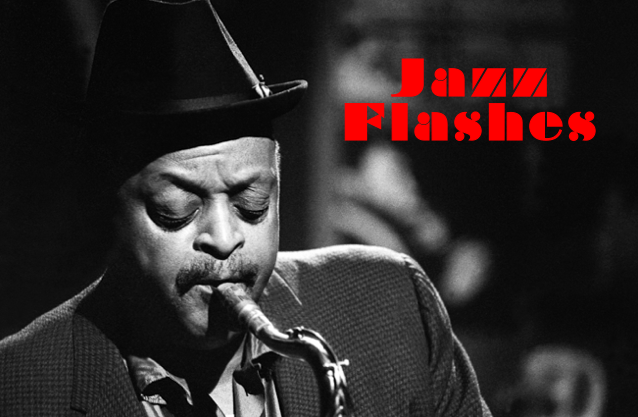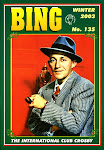Despite the fact that he has enjoyed a long and productive career,
Jack Jones is one of the 1960s crooners about whom we do not seem to hear too much these days. In his heyday, Jones scored big hits such as "Lollipops and Roses," "Wives and Lovers," and "My Best Girl," and many of his albums—especially the ones he cut during the sixties—are fantastic and, to my mind, constitute great examples of classic pop singing at its very best. In the 1970s, though, some of his records became rather erratic, as he attempted to sing contemporary songs that were ill-suited for his voice and style. Had he concentrated on singing standards with jazz-inflected backing, the way that, say,
Rosemary Clooney did for Concord in the seventies and eighties, his output would have been perhaps more satisfying. Yet it is easy—and clearly unfair—to make this kind of judgment with the benefit of hindsight. As it stands, Jones's recorded legacy, its ups and downs notwithstanding, is impressive and includes some very enjoyable titles.
Noted jazz critic
Will Friedwald has always had a soft spot for Jones's singing. In his excellent
Biographical Guide to the Great Jazz and Pop Singers, he gives the vocalist a great deal of credit for the many LPs he cut for Kapp Records in the sixties, stating that "he was precisely right for that decade—and all of those that have come since—and the classic albums he made back then will probably be prized and listened to longer than nearly all of the so-called in-the-moment pop acts of the time" (255). In the face of titles such as
Call Me Irresponsible,
Where Love Has Gone, and
There's Love & There's Love & There's Love (a superb collaboration with arranger
Nelson Riddle), among several others, it is hard to disagree with Friedwald. But the album that usually slips through the cracks whenever Jones's career is discussed is a pre-Kapp effort that he made in 1959 for Capitol entitled
This Love of Mine.
 |
| Jack's father, actor Allan Jones |
The son of actor and singer
Allan Jones and actress
Irene Hervey, Jack Jones had been born in Los Angeles in 1938 and had enjoyed the benefits of belonging to a showbiz family. He had always been fascinated with pop music, particularly with singers like
Frank Sinatra and
Mel Tormé, and by the 1950s he was appearing in nightclubs with his father, which led to a promising recording contract with Capitol. But the company, showing really poor judgment, had him record a slew of teenage pop singles that went nowhere mostly because Jones's heart was not in that kind of music. What he wanted to record was adult pop, the type of material that had made
Bobby Darin a household name. Unfortunately, Jones only got one opportunity to do this at Capitol, when he recorded the
Voyle Gilmore-produced
This Love of Mine. This was an unusual concept album in that the underlying theme that held the eleven songs together was that they were tunes penned by songwriters who were better known as singers, or whom the public in general did not associate with the songwriting craft.
One might think that such a concept would make for a weak album, but it is not the case, as the repertoire is very well chosen. There are two songs co-written by Sinatra, the title track and
"I'm a Fool to Want You." The former dates back to Sinatra's tenure with
Tommy Dorsey, while the latter is supposed to chronicle the difficulties that he underwent during his tempestuous relationship with Ava Gardner. Jones decides to take both at a noticeably faster tempo than Sinatra, which is most surprising in the case of "I'm a Fool to Want You" given the highly dramatic nature of its theme. On
"This Love of Mine" there is an unexpected guitar solo that fits the mood of the tune nicely. From the songbook of comedian
Steve Allen come "Impossible," an agreeable ballad, and the classic
"This Could Be the Start of Something Big," which shows Jones's confident approach whenever he is called upon to swing. The album also includes two songs by
Nat King Cole ("With You on My Mind" and
"To Whom It May Concern," both originally recorded by Cole for Capitol) and two by the outstanding pianist-singer-songwriter
Matt Dennis—the lesser-known
"Show Me the Way to Get Out of This World," sung in a laid-back swinging style and featuring an interesting trumpet solo, and
"Angel Eyes," the famous saloon song that Sinatra had just included in his album
Only the Lonely and undoubtedly one of the highlights of Jones's debut LP.
 |
| Arranger Bobby Hammack |
Jones approaches the witty
"I Don't Know Enough About You," penned by
Peggy Lee and her then-husband
Dave Barbour, with gusto, in an easy-swinging sort of way, and perhaps to show that he can also join the ranks of those singers who also dabble in songwriting, he offers a composition of his own, "What Would I Do," which actually turns out to be quite a respectable effort. The album closes appropriately with the beautiful
Frankie Laine ballad
"We'll Be Together Again," another one that Sinatra also recorded for Capitol (on
Songs for Swingin' Lovers). Released toward the end of 1959,
This Love of Mine earned a rather positive review from
Billboard (November 30, 1959):
After a few efforts, this is the initial LP by a lad whose work augurs a strong potential. Jack Jones is the son of former stars Allan Jones and Irene Hervey, and he has been playing nitery dates with his dad in Las Vegas and Los Angeles. He shows a feeling for a swinging rhythm, an ability to project his personality and a pleasing way of styling a ballad. Strong backing by Bobby Hammack's ork.
The reviewer is certainly right about Jones's way with both swingers and ballads, as well as about the assessment of
Bobby Hammack's arrangements, which are strong without ever getting in the way and feature some interesting touches such as the brief organ solos on "Angel Eyes" and "We'll Be Together Again." The cover is a different matter altogether—it is anyone's guess why the powers that be at Capitol thought that it was appropriate to have Jones photographed in full caveman attire, wielding a big club, and stepping on a scantily clad woman lying in the foreground, while some kind of dinosaur observes the scene in the background. Looking at it almost sixty years later, one wonders how the cover can be in any way related to the theme of the album, what kind of audience the producers were trying to target, and simply what was going through the heads of whoever decided to approve such a horrifying cover. It is, indeed, one of the strangest, most mystifying pieces of LP artwork I have ever seen. Whatever the case, in spite of the favorable review from
Billboard, the album was not much of a hit, and it was not until he signed with Kapp two years later that Jones's career would actually take off. Yet
This Love of Mine—which may be easily found on CD these days as part of the European reissue
Jack Jones: Six Classic Albums, from Real Gone Music—remains one of my favorite albums by Jones and a very enjoyable early effort that in many ways already indicates greater things to come.



































